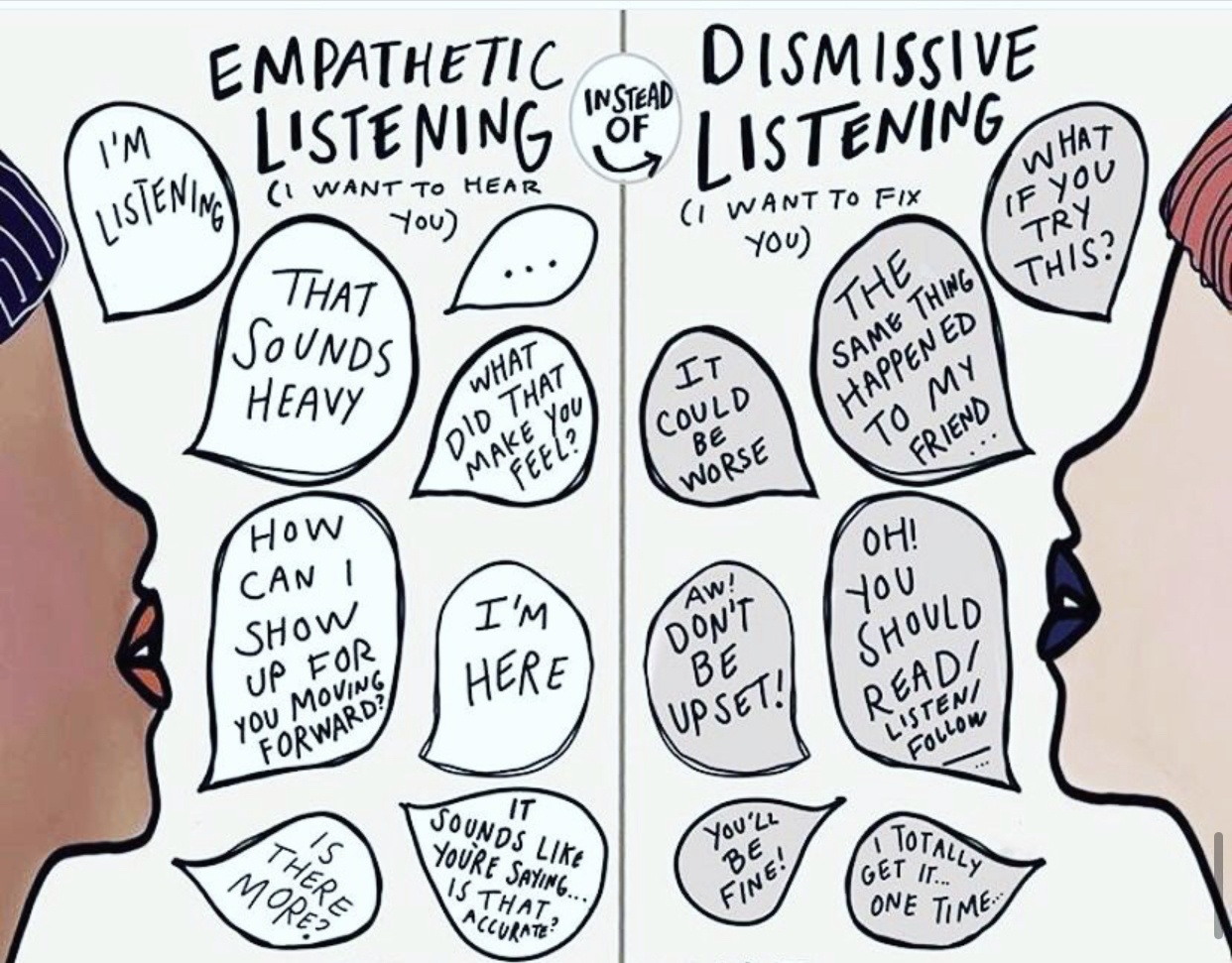
Empathetic listening and showing empathy are essential aspects of active listening that involve not only hearing the speaker’s words but also understanding and acknowledging their emotions, feelings, and perspectives. Practicing empathetic listening can lead to stronger relationships, improved communication, and increased trust. Here’s how to incorporate empathy into your listening:
Empathetic Listening
- Be Fully Present: Give the speaker your undivided attention. Avoid distractions and focus on their words and body language.
- Non-Verbal Cues: Pay attention to the speaker’s tone of voice, facial expressions, and body language. These cues can provide insights into their emotions.
- Avoid Interruptions: Allow the speaker to finish their thoughts before responding. Interruptions can disrupt the flow of conversation and make the speaker feel unheard.
- Reflective Listening: Practice paraphrasing or summarizing what the speaker has said to demonstrate that you are actively trying to understand their perspective.
- Example: “It sounds like you’re feeling frustrated because of the project delays.”
- Ask Clarifying Questions: If something is unclear or you need more information, ask open-ended questions to encourage the speaker to share their feelings and thoughts.
- Validate Emotions: Acknowledge the speaker’s emotions without judgment. Use phrases like “I understand how you feel” or “That must be challenging.”
- Avoid Offering Solutions Immediately: Sometimes, the speaker may not be seeking solutions but simply needs someone to listen and empathize.
Showing Empathy
- Express Understanding: Let the speaker know that you understand and appreciate their perspective, even if you don’t necessarily agree with it.
- Use Empathetic Statements: Use statements that convey empathy and support, such as “I’m here for you,” “I can see why this is important to you,” or “I’m sorry you’re going through this.”
- Offer Comfort: If the situation calls for it, offer comfort or reassurance to the speaker. Sometimes, a simple “I’m here to support you” can go a long way.
- Avoid Judgment: Refrain from passing judgment or offering unsolicited advice. Empathetic listening is about providing a safe space for the speaker to express themselves.
- Practice Active Listening: Continuously engage in active listening techniques to show that you are fully engaged in the conversation and genuinely care about the speaker’s experience.
Benefits of Empathetic Listening and Showing Empathy
- Building Trust: Empathy fosters trust and strengthens relationships, as individuals feel heard and understood.
- Conflict Resolution: Empathetic listening can de-escalate conflicts and lead to more productive discussions.
- Enhanced Communication: When people feel valued and understood, they are more likely to communicate openly and honestly.
- Support and Comfort: Showing empathy can provide emotional support and comfort to individuals going through challenging times.
Empathy in Professional and Personal Life
- Empathetic listening is crucial in various contexts, including professional settings (e.g., team collaboration, leadership, customer service) and personal relationships.
- It can improve teamwork, enhance leadership skills, and create a more supportive and compassionate work or home environment.
Practice and Continuous Improvement
- Empathy is a skill that can be developed and refined over time. Regularly practice empathetic listening to become more proficient.
- Seek feedback from others on your ability to listen empathetically and make adjustments as needed.
In summary, empathetic listening and showing empathy involve actively and compassionately engaging with others to understand their feelings, perspectives, and experiences. By practicing these skills, you can enhance your relationships, improve communication, and provide valuable support to those around you